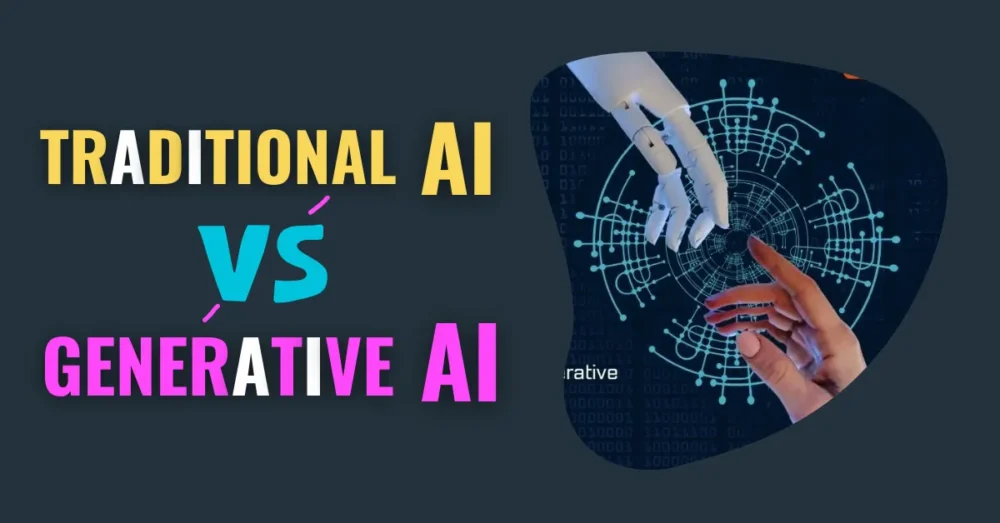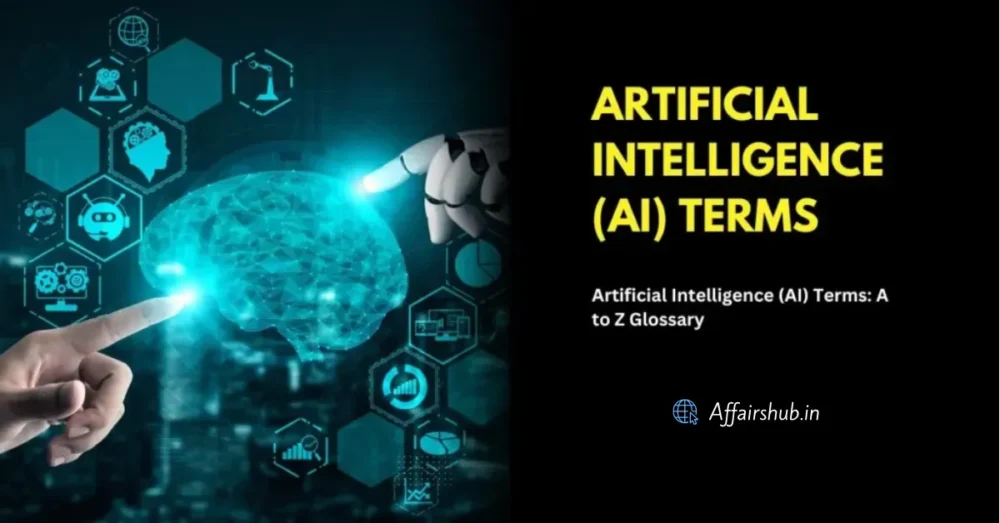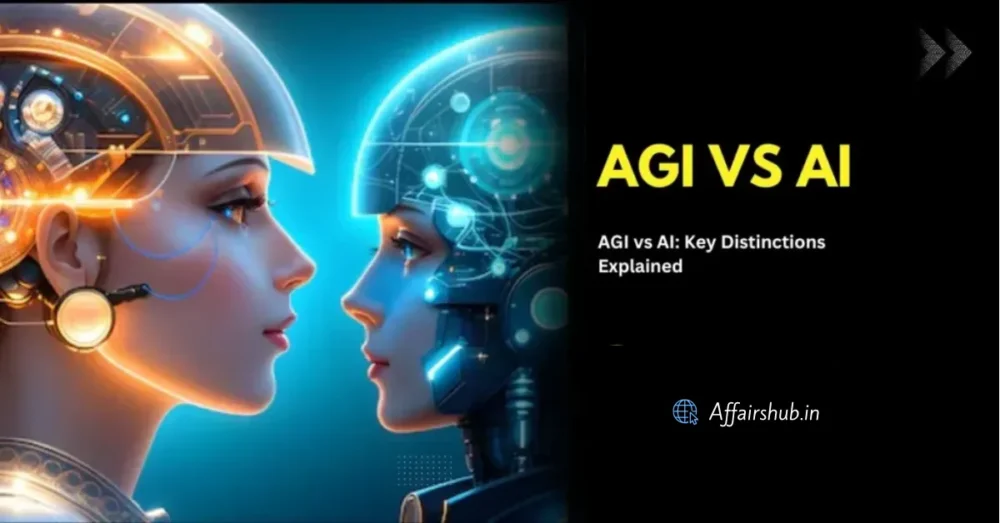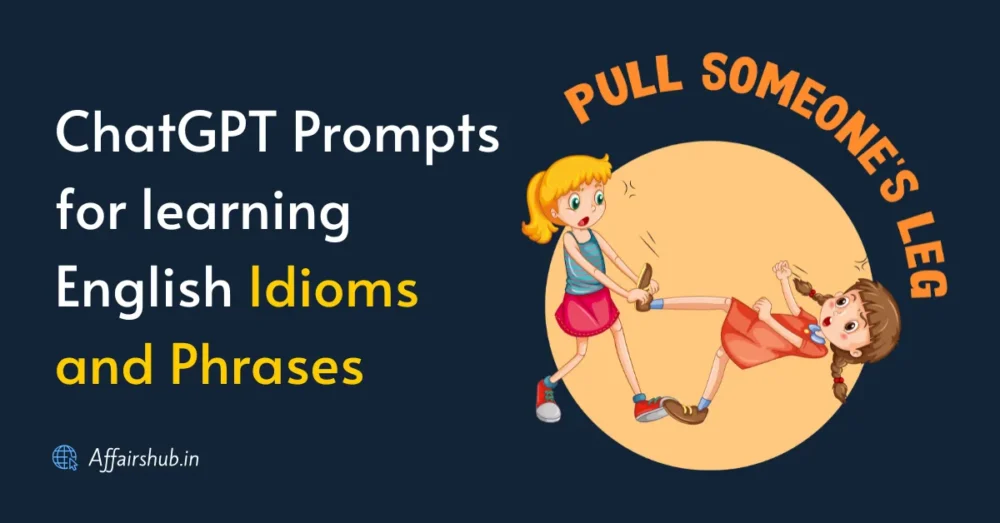Artificial Intelligence (AI) is changing the way we learn and teach, making it important for teachers to understand the basics of AI. This guide will help educators by explaining Essential AI Terms and Definitions in simple language.
Whether you’re just starting to explore AI or looking to improve your knowledge, this blog post will give you a clear understanding of key AI concepts. With this information, teachers can confidently bring AI into their classrooms and make learning even more exciting and effective for their students.
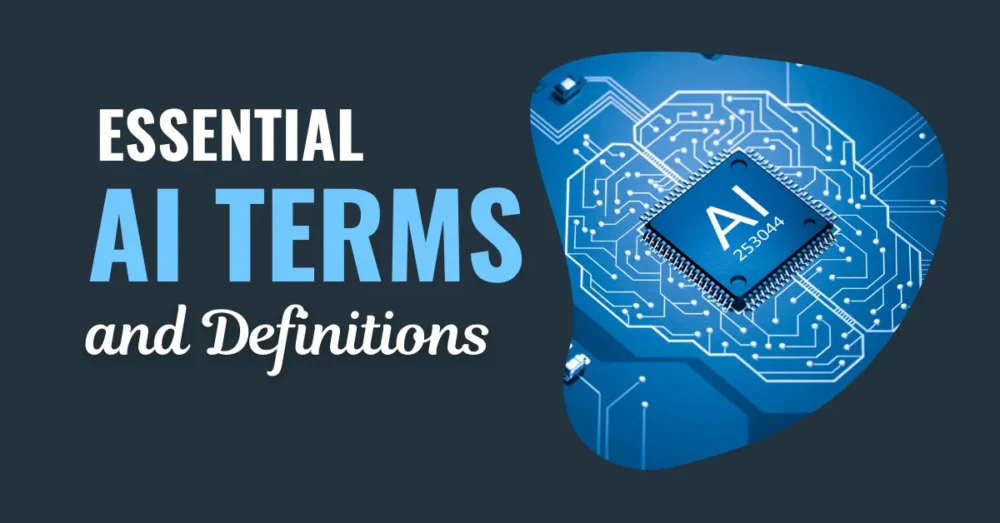
What is Artificial Intelligence?
Artificial Intelligence (AI) is the ability of computers and machines to perform tasks that normally require human intelligence.
AI systems can learn from experience, make decisions, solve problems, and even understand language.
From smart assistants like Siri and Alexa to customized learning tools in classrooms, AI is becoming a part of everyday life.
In education, AI can help create personalized learning experiences, allowing students to learn at their own pace.
It can also assist teachers by automating tasks and providing insights into student progress. AI is transforming how we work, learn, and interact with technology, making it an essential part of our future.
By understanding AI technology and its uses, educators can bring this innovative tool into the classroom and enhance the learning experience for students.
▪️Also Explore: Artificial Intelligence (AI) Terms: A to Z Glossary 2024
Essential AI Terms and Definitions for Teachers
Machine Learning (ML)
What is Machine Learning (ML)?
Machine Learning (ML) is a branch of Artificial Intelligence (AI) that allows computers to learn from data and make decisions or predictions without being explicitly programmed.
Instead of following pre-set instructions, ML systems improve over time by analyzing large datasets and recognizing patterns.
The more data they process, the better they get at making accurate decisions.
Examples of Machine Learning in Education:
- Personalized Learning: ML algorithms can analyze each student’s performance and create custom lessons, ensuring that every student learns at their own pace and ability level. This helps improve engagement and academic success.
- Automated Grading Systems: ML-based grading tools can automatically assess assignments, tests, and quizzes, providing instant feedback to students. This saves teachers time and ensures that students receive prompt responses to their work.
By using Machine Learning in the classroom, educators can provide a more tailored and efficient learning experience, helping students achieve their best.
Neural Networks
What are Neural Networks?
Neural Networks are a type of algorithm that helps computers recognize patterns in data.
Inspired by the way the human brain works, these networks consist of interconnected nodes, or “neurons,” that collaborate to process and understand information.
The more data the neural network processes, the better it becomes at recognizing patterns and making decisions.
Examples of Neural Networks in Education:
- Language Translation: Tools like Google Translate use neural networks to translate text accurately across multiple languages. This helps students and teachers overcome language barriers and access learning materials in different languages.
- Image Recognition: Neural networks are used in educational apps to identify objects in images, making interactive learning more engaging. For instance, these networks can recognize and label pictures in science lessons or assist visually impaired students in understanding images.
By incorporating Neural Networks into education, teachers can improve learning experiences with smarter tools that understand and adapt to students’ needs.
Natural Language Processing (NLP)
What is Natural Language Processing (NLP)?
Natural Language Processing (NLP) is a branch of AI that helps computers understand, interpret, and respond to human language.
NLP enables systems like chatbots and virtual assistants to communicate with users in a conversational way.
Examples in Education:
- Chatbots: AI-powered chatbots provide real-time answers to student queries, offering instant support.
- Writing Assistance: Tools such as Grammarly assist students by suggesting grammar and style improvements, helping them enhance their writing skills.
Deep Learning
What is Deep Learning?
Deep Learning is a specialized area of Machine Learning (ML) that involves using neural networks with many layers, known as deep neural networks.
These advanced networks can process huge amounts of data and recognize complex patterns that are often difficult for traditional computer programs to understand.
The deeper the layers, the more accurately the system can learn and make decisions.
Examples of Deep Learning in Education:
- Advanced Tutoring Systems: AI tutors use deep learning to offer personalized feedback and adapt to each student’s learning style. These systems understand the strengths and weaknesses of students, offering customized lessons that enhance the learning experience.
- Predictive Analytics: Deep learning helps identify students who might be at risk of falling behind. By analyzing student data, it can predict potential challenges and enable teachers to intervene early, offering support to ensure no student is left behind.
By leveraging Deep Learning in education, schools can create more effective and responsive learning environments that meet the unique needs of each student.
Algorithms
What are Algorithms in AI?
An algorithm is a set of instructions or rules that guide an AI system in learning or solving a problem.
In simple terms, it’s like a recipe that tells the AI how to process information, make decisions, and improve over time.
In AI, algorithms are essential for analyzing data, recognizing patterns, and making intelligent choices.
Examples of Algorithms in Education:
- Recommendation Systems: AI algorithms can suggest books, resources, or even activities based on a student’s interests, past behavior, and performance. This personalized approach helps students find the right materials to support their learning journey.
- Curriculum Planning: Algorithms can optimize lesson plans by analyzing student performance data. This allows teachers to adapt their curriculum, ensuring lessons meet the needs of all students and focus on areas where improvement is needed.
By using algorithms in education, AI enhances the learning experience, making it more personalized and efficient for both students and educators.
◾Don’t Miss: AGI and AI: Understanding the Key Differences
Data Mining
What is Data Mining?
Data Mining is the process of discovering valuable information by analyzing large sets of data. In education, it involves examining student performance data to uncover useful patterns and insights that can improve learning outcomes.
Examples in Education:
- Performance Analysis: Identifying trends in student performance to personalize and improve teaching methods.
- Resource Allocation: Analyzing data to determine which educational resources are most effective for various student groups.
Artificial Neural Networks (ANN)
What are Artificial Neural Networks (ANN)?
Artificial Neural Networks (ANN) are a special type of neural network used in AI.
They are made up of layers of nodes that work together to process information, just like the neurons in the human brain.
Each node in the network performs a small task and passes the data to the next node, allowing the system to make more complex decisions and predictions.
Examples of Artificial Neural Networks in Education:
- Speech Recognition: ANN can be used in language learning apps to convert spoken words into text. This helps students practice pronunciation and learn new languages more effectively.
- Adaptive Learning: Artificial Neural Networks can create personalized learning experiences by analyzing how each student learns and adjusting lessons based on their strengths and weaknesses. This makes learning more tailored and efficient.
With ANN in education, AI helps make the learning process smarter and more personalized for students, improving outcomes and engagement.
Big Data
What is Big Data?
Big Data refers to large volumes of data that can be analyzed using advanced computational techniques to uncover valuable insights, patterns, and trends.
In the field of education, big data can be derived from various sources like student records, online activities, and performance data.
Examples in Education:
- Student Engagement: Analyzing how students interact with digital content to refine and improve learning materials.
- Outcome Prediction: Leveraging historical data to forecast student performance, helping educators provide targeted support and interventions.
Computer Vision
What is Computer Vision?
Computer Vision is a branch of AI that allows computers to understand and make decisions based on visual information, such as images or videos.
It helps computers “see” and interpret the world around them, much like how humans process visual data.
From recognizing faces to analyzing video content, computer vision makes it possible for machines to interact with the world visually.
Examples of Computer Vision in Education:
- Virtual Labs: Computer Vision and augmented reality (AR) can be combined to create interactive lab experiences. Students can engage with virtual objects and simulations, making science experiments more accessible and engaging.
- Classroom Monitoring: In online classrooms, computer vision can be used to monitor students’ engagement and participation. It can track whether students are paying attention, helping teachers adjust their teaching strategies to keep everyone involved.
By integrating Computer Vision in education, learning experiences become more interactive, personalized, and effective.
◾Don’t Miss: How to Prompt ChatGPT to be an Expert?
Robotics
What is Robotics?
Robotics is the science of designing, building, and using robots to perform various tasks.
These robots can be programmed to complete specific jobs, and with the help of AI, they become smarter and more adaptable.
AI allows robots to learn from their environment, making them more capable of handling complex tasks and situations.
Examples of Robotics in Education:
- Robotics Kits: Students can learn coding and engineering by building robots with hands-on projects. These kits help them understand how robots work and encourage problem-solving skills.
- AI Tutors: Robots powered by AI can assist in tutoring students and managing the classroom. These robots can interact with students, provide personalized help, and even track their progress, enhancing the learning experience.
By incorporating Robotics in education, students gain valuable skills in STEM (Science, Technology, Engineering, and Mathematics), preparing them for the future.
Augmented Reality (AR) and Virtual Reality (VR)
What is Augmented Reality (AR) and Virtual Reality (VR)?
Augmented Reality (AR) enhances the real world by adding digital information, while Virtual Reality (VR) creates an entirely virtual environment for users to interact with. When combined with AI, both AR and VR can offer more engaging and personalized learning experiences.
Examples in Education:
- Virtual Field Trips: Students can explore historical landmarks or scientific phenomena in immersive virtual environments, making learning more engaging.
- Interactive Learning: AR can be used to bring complex topics, like anatomy or space, to life, allowing students to interact with visual representations and better understand these concepts.
Chatbots
What are Chatbots?
Chatbots are AI-powered programs that simulate conversations with human users. These intelligent systems can provide immediate responses and manage a variety of queries, making them highly useful in different fields, especially in education.
Examples of Chatbots in Education:
- Student Support: Chatbots can offer 24/7 assistance to students, helping them with common questions related to coursework, deadlines, or campus facilities. This ensures that students have quick access to the information they need.
- Learning Assistance: Chatbots can help students by guiding them to the right resources or explaining difficult concepts in real-time. They act as on-demand tutors, available whenever students need clarification or support.
With their ability to provide timely and personalized help, chatbots are transforming the way students engage with learning, making education more accessible and efficient.
Learning Analytics
What is Learning Analytics?
Learning Analytics is the process of gathering and analyzing data about students and their learning environments to improve educational outcomes.
By using AI, this field offers valuable insights that help enhance teaching methods and provide better support to students.
Examples in Education
- Personalized Feedback: Analyzing student performance to give tailored feedback that helps students improve in specific areas.
- Curriculum Development: Using data-driven insights to adjust and optimize lesson plans, course materials, and teaching strategies for better results.
Ethical AI
What is Ethical AI?
Ethical AI refers to the development and use of AI systems in ways that are fair, transparent, and accountable.
It focuses on ensuring that AI technologies are used responsibly, without causing harm or promoting bias.
The goal is to create AI systems that prioritize equality, fairness, and transparency in all aspects of their operation.
Importance of Ethical AI in Education
- Bias Mitigation: It is essential to ensure that AI tools do not unfairly disadvantage any student group. For example, AI algorithms used in grading or personalized learning should not be biased against certain demographics, ensuring all students are treated equally.
- Transparency: Educators and students need to understand how AI systems make decisions. Ethical AI ensures that AI’s decision-making processes are clear and transparent, fostering trust among users and avoiding misunderstandings.
By prioritizing ethical considerations, AI can be used to enhance the educational experience while protecting the interests and rights of all students and educators.
Conclusion
Grasping these key AI terms is vital for teachers in today’s technology-driven world. By understanding these concepts, educators can utilize AI to improve their teaching strategies, tailor learning experiences for students, and boost academic success. As AI continues to progress, staying updated on its advancements will be essential for effectively incorporating these innovative tools into the classroom.
